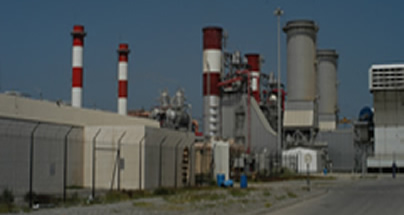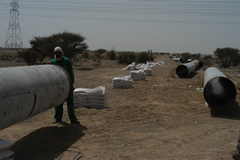Since 1967 the economy of Oman has been
dominated by its dependence on crude oil. Today oil represents about 90%
of Oman's exports. In addition natural gas has been produced since 1978.
The income generated was quickly deployed into building infrastructures
of roads, schools, hospitals, water and electricity generating plants.
All of this activity has made Oman a major success story for economic
growth despite being the only oil-producing nation in the Middle East
that is not a member of OPEC. Other exports are fish, metals and textiles.
Agriculture and fishing are the traditional way of life in Oman and 42
% of the population is still working in this sector. Dates, limes, pomegranates
and tobacco are grown, mostly in the Al-Batinah coastal plain and in the
region around Salalah. Coconut palms, wheat, and bananas are also grown,
and cattle are raised in Dhofar. Other areas grow cereals and forage crops.
Poultry production is steadily rising. The coastal waters around Oman
have large fish populations. The main fish exports are tuna, swordfish
and shark.
Continue to "Nature Conservation in Oman".
To read more about Oman's economical development, please download the essay "Introduction to Oman" by Felix Richter and "Economic development in Oman - From Magan until the 21st century" by Philip Mundhenk and Christian Beuter.


